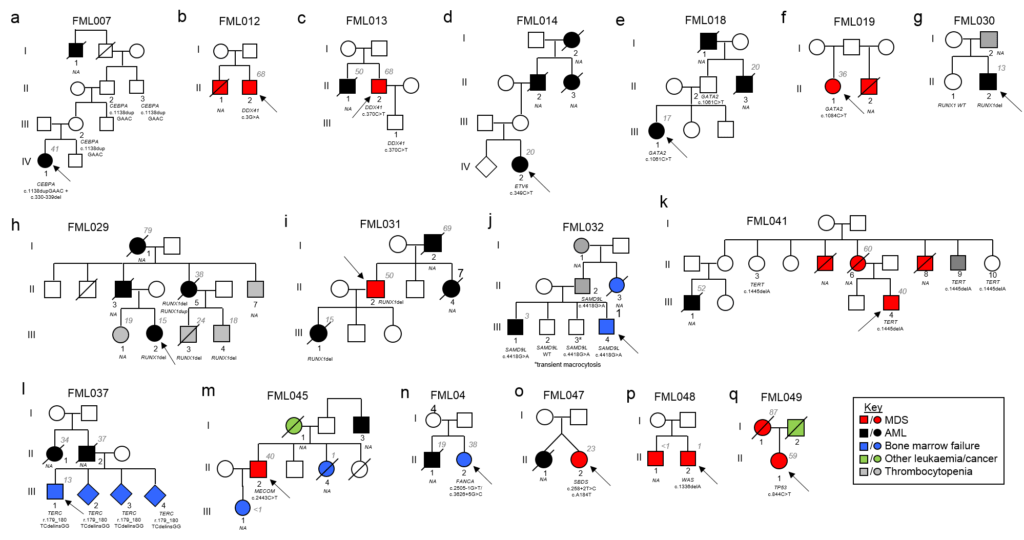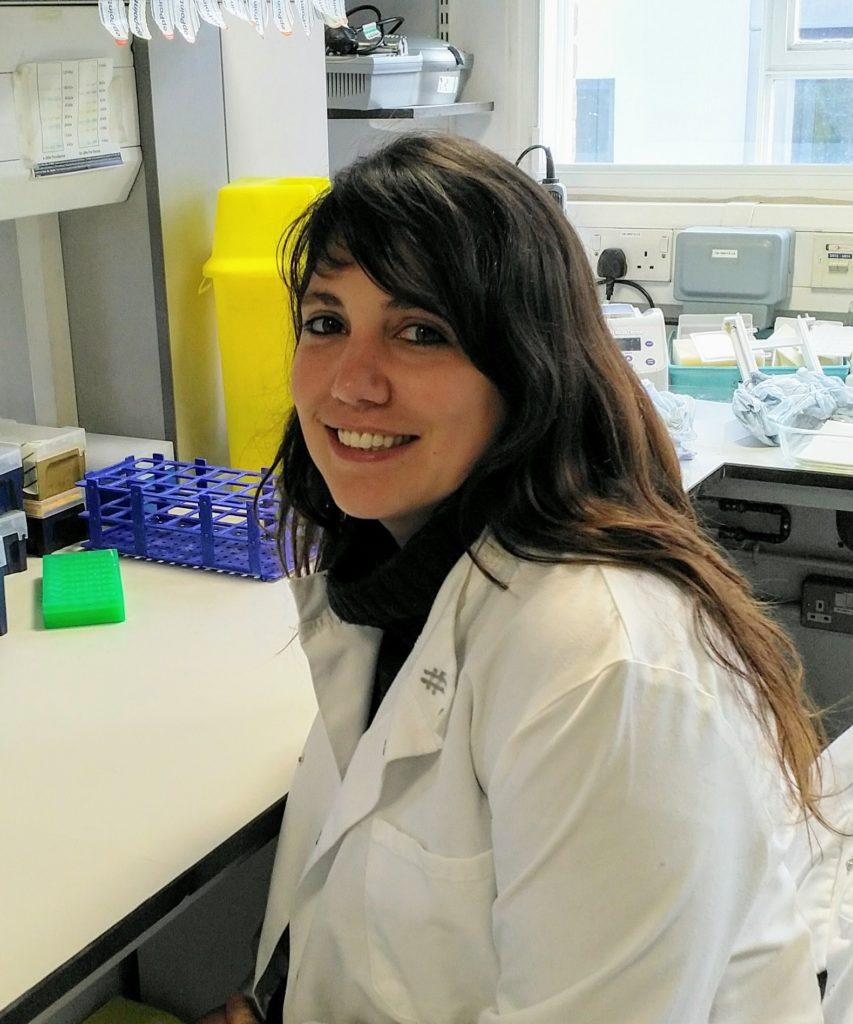New and valuable insights into familial myeloid leukaemia
Research from the Barts Cancer Institute (BCI) and the Blizard Institute, Queen Mary University of London, has identified new genetic features implicated in a type of blood cancer known as familial myeloid leukaemia. The study, published last week in Nature Communications, offers novel insights into the biology of this inherited cancer, and provides a framework to inform how to more effectively manage at-risk individuals and patients affected by this type of blood malignancy.
Sporadic versus familial leukaemia

Leukaemia is a type of blood cancer where patients present an abnormal growth of white blood cells and in the majority of cases it is sporadic, meaning that it is not caused by an inherited gene mutation. However, in about 5% of cases, two or more members of the same family are affected by the disease. These cases are known as familial myeloid leukaemia and are the result of genetic mutations within sperm or egg cells that are passed on from parent to child, leading to the child having an inherited predisposition to developing cancer.
Although considered rare, the true prevalence of familial myeloid malignancies is not known and their genetic landscape is not fully understood. Having a rich collection of samples from families affected by myeloid malignancies is vital for making progress in this field. The present study, conducted by researchers from the BCI, led by Professor Jude Fitzgibbon, and the Blizard Institute, led by Professors Inderjeet Dokal and Tom Vulliamy, set out to address this knowledge gap.

The team collected and analysed samples from almost 100 families affected by myeloid malignancies from institutions throughout the UK and several international centres, in order to gain an increased understanding of the genetic features of this cancer type. This is the largest cohort of families affected by myeloid malignancies assembled to date.
Dr Ana Rio-Machin, postdoctoral researcher in BCI’s Centre for Haemato-Oncology and first author of the study, said:
“This analysis has allowed us to better understand the clinical and genetic features of this heterogenous group of myeloid malignancies. Intriguingly, we have identified some new genetic variants that reside in genes that have never been linked previously to leukaemia. This new information, while important for the individual families, will also offer a completely new insight into the biology of this disease.”
The study was primarily funded by Bloodwise, which is changing its name to Blood Cancer UK next month, with additional support from the Medical Research Council and Cancer Research UK.
Raising awareness of familial blood malignancies
The nature of familial myeloid leukaemia is diverse and varies from family to family. Patients can present with the disease between the ages of 2-68 years, some family members can have no symptoms but carry the mutations, and other families may present with non-haematological features, such as congenital deafness or grey hair. This diversity, or heterogeneity, is perhaps reflected by the complex genetic constitution of this blood malignancy and has made recognition of this disease in the clinic difficult.
Importantly, with funding from Bloodwise and as part of this project, diagnostic testing has now been implemented in the UK for patients with suspected familial leukaemia, where familial gene screening can be performed through the West Midlands Regional Genetics Laboratories in Birmingham. This is an important step forward for the care of patients with familial leukaemia and at-risk family members, allowing for the implementation of careful monitoring and counselling for these individuals.
Dr Alasdair Rankin, Director of Research and Policy at Bloodwise, said:
“If you have a family member with acute myeloid leukaemia, your chances of also developing it is thankfully relatively low, but not knowing if you are at risk can be incredibly worrying. This research represents an important breakthrough in this rare type of leukaemia and offers reassurance to people that everything is being done if they are at increased risk.”
The findings from this research aid in raising awareness of the existence of familial forms of leukaemia and offer novel insights into the complex genetic landscape of these malignancies. Not only has the study provided valuable information to inform how to more effectively diagnose and manage at-risk individuals and patients, but it has also highlighted the need to increase biobanking of tissue from patients with these forms of leukaemia to support research in the future.
Category: General News, Publications

No comments yet